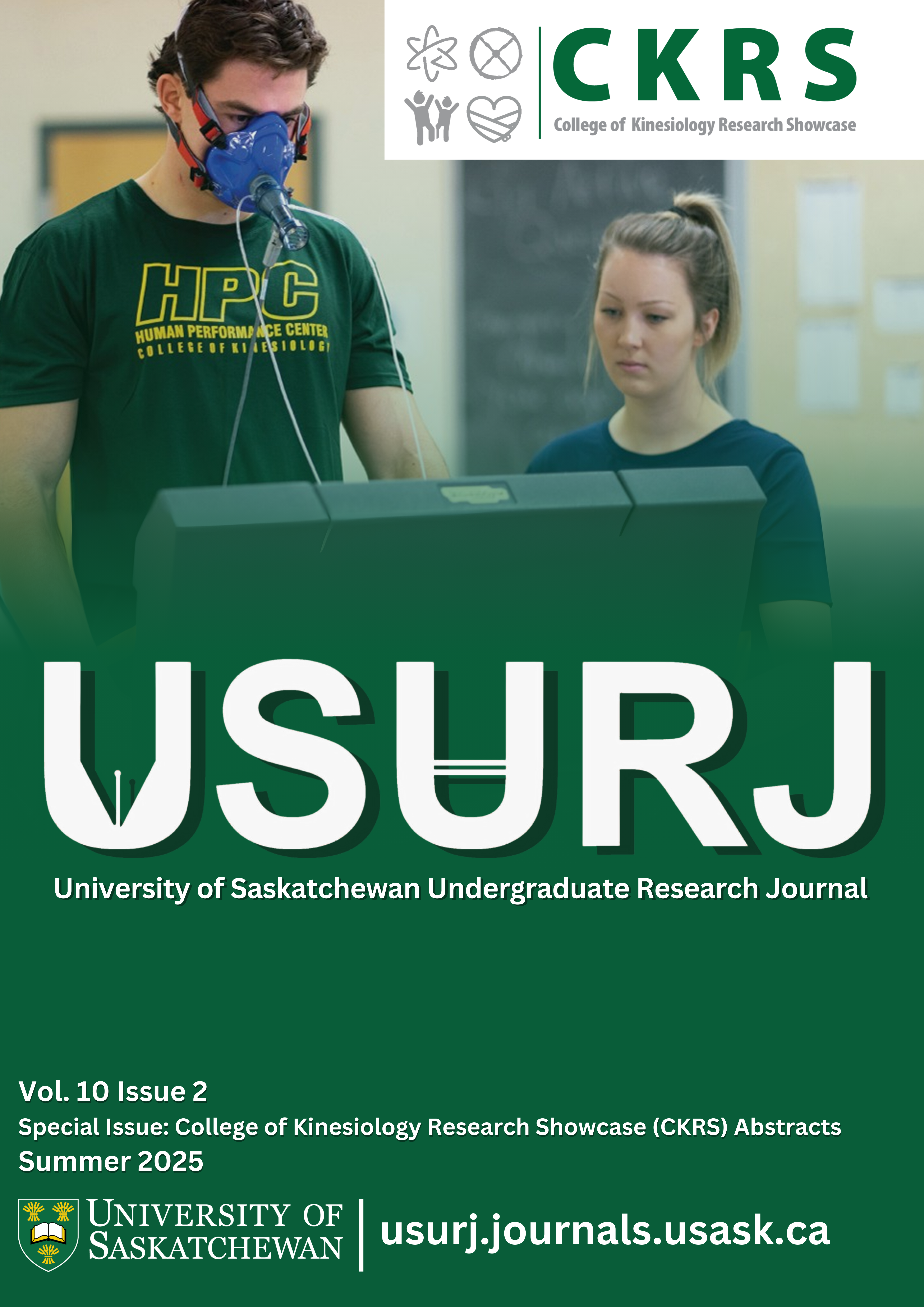Difference in the Arterial Stiffness Measures between Métis Adults with High or Low Connection to Land
Main Article Content
Abstract
College of Kinesiology Research Theme: Indigenous Wellness
Introduction: Qualitative research identified land connection as a significant determinant of Métis health. Arterial stiffness, a measure of vascular health, may help evaluate the significance of land connection on cardiovascular health. This study aimed to explore how arterial stiffness measures differed between Métis adults with high or low land connection.
Methods: In partnership with Saskatoon Métis Local 126, Métis adults completed an in-person, paper questionnaire about land connection. Four questions measured participants' land connection: 1) time spent on the land; 2) rural land accessibility; 3) feelings of holistic wellness from land connection; and 4) ability to connect with the land anytime. Central and peripheral pulse wave velocities (PWV) were used to measure arterial stiffness and were compared between individuals with high and low land connections.
Results: The 56 participants (35 females, 21 males) had a mean age of 34 ± 13 years. For each question, the central, upper and lower peripheral PWV were similar between those with high and low land connections. For overall scores, central PWV was similar between high and low land connection groups (n = 42 vs. 11; 8.57 ± 3.83 m·s-1 vs. 8.86 ± 4.57 m·s-1; p = 0.42). Upper peripheral PWV was similar between high and low land connection groups (n = 41 vs. 11; 20.44 ± 10.39 m·s-1 vs. 25.50 ± 18.13 m·s-1; p = 0.20). Lower peripheral PWV was similar between high and low land connection groups (n = 39 vs. 11; 9.98 ± 2.35 m·s-1 vs. 10.24 ± 1.52 m·s-1; p = 0.37).
Conclusion: This study found no significant association between land connection and arterial stiffness among Métis adults. Future research with larger sample sizes and appropriate control for physical activity variables is needed.
Downloads
Article Details
Section
Articles: USURJ’s current Publication Agreements apply a Creative Commons Attribution-NonCommercial License (CC-BY-NC) by default. The CC BY-NC license lets others remix, tweak, and build upon work non-commercially. The author(s) can choose a different CC license, as outlined in https://creativecommons.org/about/cclicenses/. Please see the PDF for each article to determine what license is applied to that article. Author(s) can also request to reserve all copyright (All Rights Reserved). If there is no indication for articles published before September 2020, assume the author retains all rights beyond those necessary for publication by USURJ. All articles published after September 2020 will apply one of the aforementioned CC licenses. See the Publication Agreement under the Submission Preparation Checklist or Author Guidelines for more information. Artwork: All copyright for the original artwork remains with the artist unless they wish to apply a Creative Commons (CC) license to the artwork. Please see the PDF for each artwork to determine what license is applied to that artwork.
